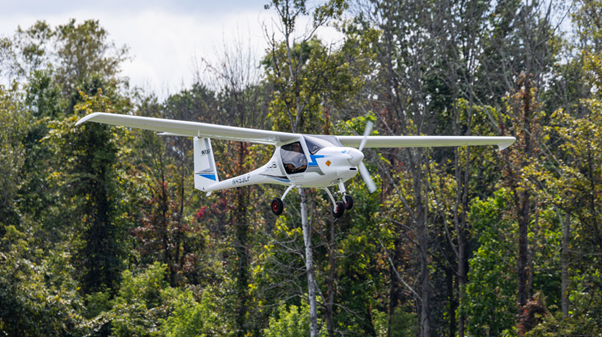Pipistrel’s Velis Electro Promises Electric Revolution
Pipistrel’s Velis Electro, the world’s first type-certificated electric aircraft, is set to shape the future of sustainable aviation as it teams up with the U.S. Air Force’s Agility Prime program for innovative training and operational missions.

Velis Electro flying over forest [Courtesy Pipistrel/Frank Galella]
In a significant leap toward sustainable aviation, Pipistrel, a subsidiary of Textron Inc., has announced that the Velis Electro, the world's first type-certified electric aircraft, has been selected by the U.S. Air Force for its Agility Prime program (AFWERX).
Agility Prime, the service’s cutting-edge, vertical lift initiative, explores the operational and training potential of electric vertical takeoff and landing (eVTOL) aircraft for various mission-critical purposes, including training and operations.
"AFWERX and MTSI’s selection of the Velis Electro is a powerful endorsement of Pipistrel and the growing acceptance by leading organizations of this area of emerging technology,” Kriya Shortt, president and CEO of Textron's eAviation segment, said in a release. “This marks an important milestone on the journey to sustainable flight, and we are proud to support the Agility Prime program as the Velis enters its fleet."
Pipistrel, headquartered in Slovenia, said the Velis Electro stands out as a cost-effective and environmentally friendly choice for flight training, with its mature electric engine design developed in-house by Pipistrel. Company president Gabriel Massey emphasizes the aircraft's remarkable potential.
"The Velis Electro is a cost-effective and sustainable option for flight training,” Massey said. “With its mature electric engine design…the Velis Electro leads the industry in carrying out more sustainable pilot training and other missions."
Two Velis Electro aircraft will be directly supported by Pipistrel's distributor, Lincoln Park Aviation, which the company believes marks a stride toward a greener, more sustainable future in aviation.
Editor's Note: This article first appeared on Plane & Pilot.

Subscribe to Our Newsletter
Get the latest FLYING stories delivered directly to your inbox






